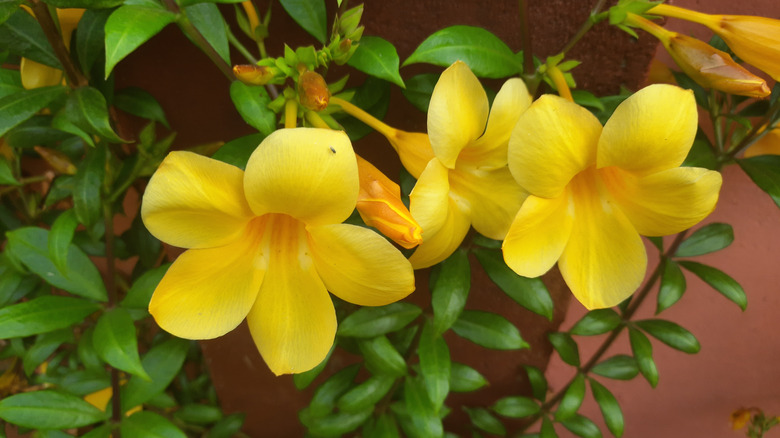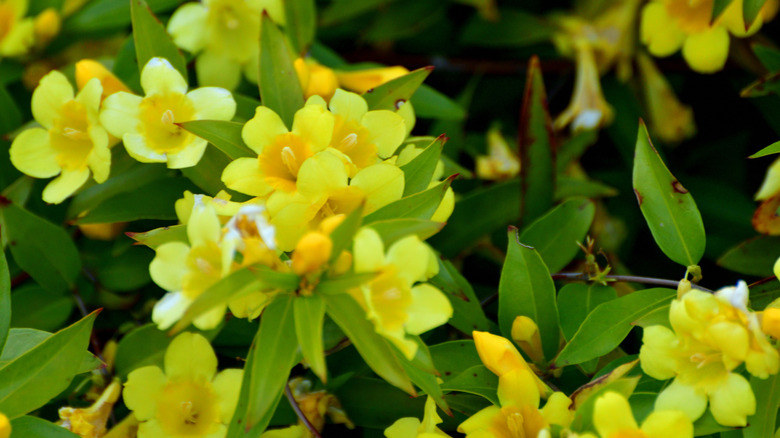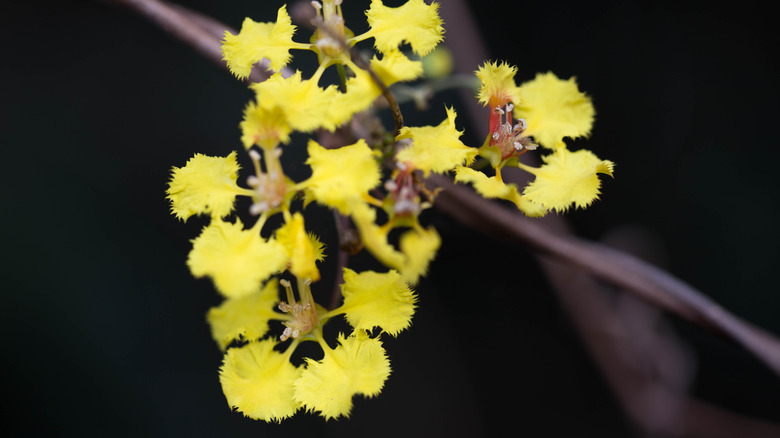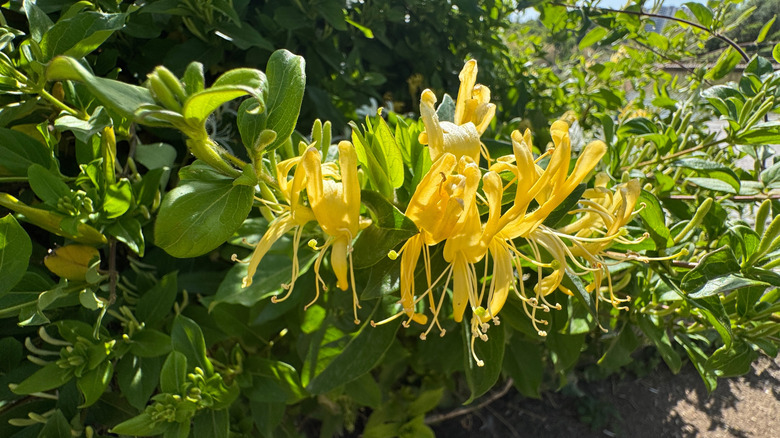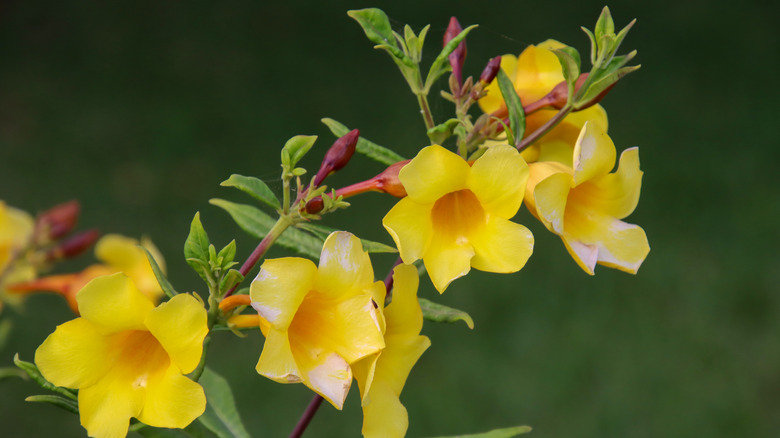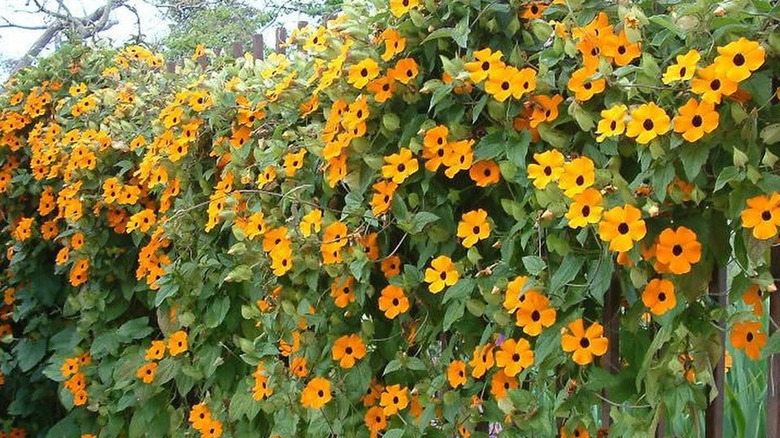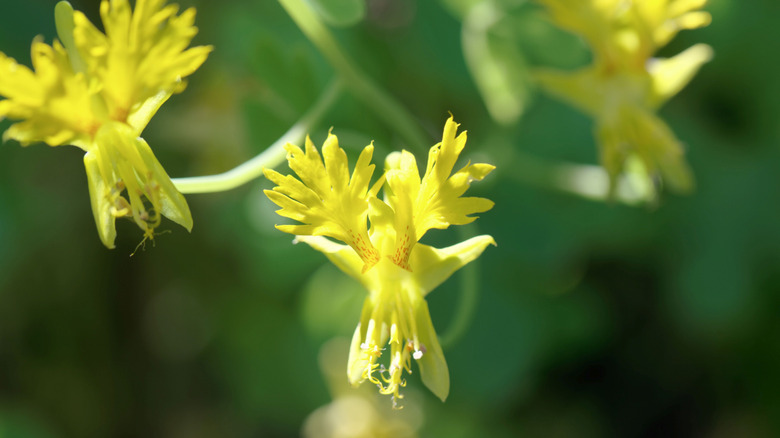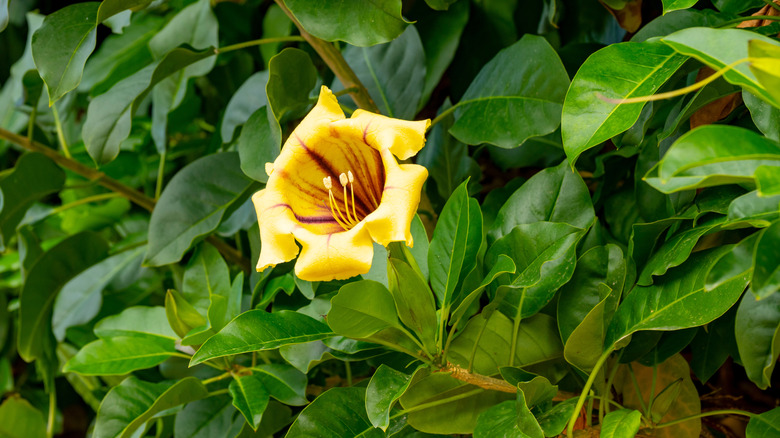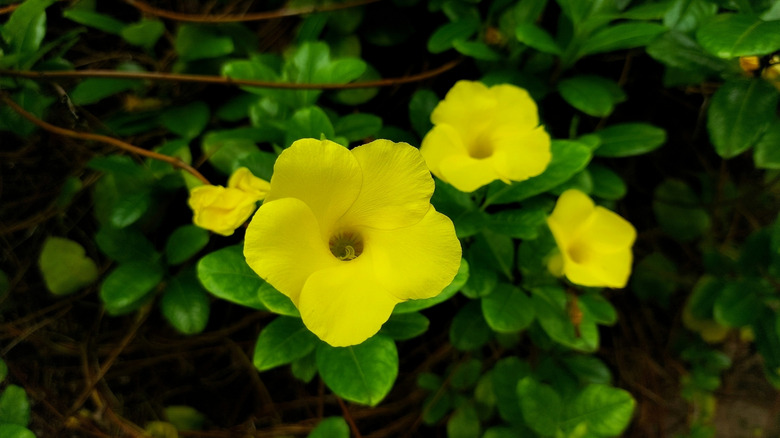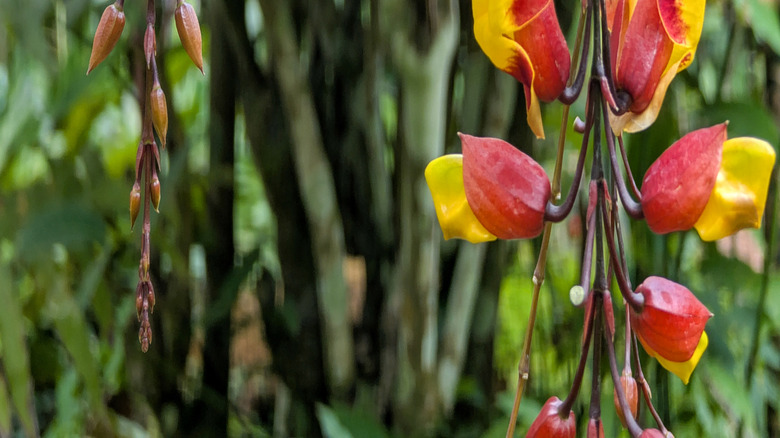9 Yellow-Flowering Climbing Plants That Pollinators Love
In most circumstances, one shouldn't be too concerned with popularity. However, when it comes to how popular your garden is among the neighborhood pollinators, it pays to pander to others' tastes. For instance, a straightforward way to attract more pollinators to your garden is to plant flowers that bloom in one of their favorite colors: yellow. While most pollinators or animals that help fertilize flowers, like bees and other insects, yellow is particularly alluring to butterflies and hummingbirds. Fortunately, the world is full of yellow-flowering plants, including many climbing shrubs and vines that can coat your lawn in shades of gold.
Climbing plants add visual interest to vertical surfaces or tall garden structures like pagodas, trellis, and exterior walls. When you're already working with such a versatile category of plants, the fact that their flowers will bring pollinators who will improve your entire garden only sweetens the deal. With options like trumpet honeysuckle, yellow bell vine, and more, butterflies and bees will love these yellow-flowering climbing plants — as long as you're avoiding the mistakes that make it harder to attract pollinators to your yard.
Carolina jessamine
The sweet, sunny appearance of Carolina jessamine (Gelsemium sempervirens) belies its high toxicity. Still, as long as no one tries a bite of this perennial vine, it can add a thick swath of buttery yellow flowers and rich green foliage to fences and trellises. Carolina jessamine grows best in USDA Hardiness Zones 6 through 10, where it can tolerate a variety of soil types and either full or partial sun. With regular watering, this sprawling vine can grow prolifically and engulf a lot of space, so keep your pruning shears handy.
Yellow butterfly vine
Also known as a yellow orchid vine, the yellow butterfly vine (Callaeum macropterum) gets its name not from its delicate little flowers but from its old seed pods that look a bit like flapping wings. Hardy in zones 8 through 11, this quick-growing vine is native to Mexico and tolerant of high heat and drought, though it does prefer regular watering. Plant it in loose soil and partial or full sun, and you'll be rewarded with a bountiful, shrubby vine that will have real butterflies lining down the block to get a sniff.
Trumpet honeysuckle
Trumpet honeysuckle (Lonicera sempervirens) comes in a few stunning shades, but if you're looking for yellow, opt for cultivars like 'John Clayton' and 'Sulfurea.' This variety of honeysuckle is extremely easy to grow; it is drought tolerant, and as long as it has well-draining soil and at least four hours of sunlight a day, it can thrive in zones 4 through 9. While trumpet honeysuckle is a vine, if you don't have an arbor or trellis to support it, it also makes a great ground cover. Either way, it's a pollinator's dream.
Yellow bell vine
Originating from South America, golden trumpet (Allamanda cathartica) is a tropical vine that grows hardy in zones 10 and 11. To recreate its native conditions, the golden trumpet needs full sun and moist soil, which may require frequent watering, especially in arid regions. That extra maintenance will be worth it, though, when you're greeted with yellow allamanda's soft blooming flowers and dense, leathery green leaves. Be aware that touching yellow bell vine sap can cause a brief bout of contact dermatitis and that the entire plant is poisonous via ingestion.
Black-eyed Susan vine
While ordinary black-eyed Susans (Rudbeckia hirta) are certainly worth planting, they can't reach the same heights as a black-eyed Susan vine (Thunbergia alata). Named for its similar color pattern to the wildflower, not because of any shared lineage, thunbergia is an annual that grows best in hardiness zones 10 and 11. It needs loose, perpetually moist soil, and partial to full sun. As a smaller vine (growing less than ten feet high), thunbergia is a good plant to bring indoors and add some natural verticality to your home. For the yellowest Susans, try the 'Canary Eyes' cultivar.
Canary creeper
With its fringed, bright yellow petals and rounded foliage, the canary creeper (Tropaeolum peregrinum) is sure to make a statement in any garden. Also known as canary bird flower, this rambling vine is drought and heat-tolerant, growing hardy in zones 9 and 10. To get the best results, plant canary creeper somewhere with moist, loose soil and full sun. This durable vine can easily grow over walls or other shrubs, but figure out if a climbing vine will damage your home before you let one sprawl over your house's exterior.
Golden chalice vine
The unique, broad, sunset-colored flowers and dense foliage of the golden chalice vine (Solandra maxima) are best cultivated by adept gardeners, but the result of having this show-stopping bloom in your yard will be worth it. While not technically invasive, golden chalice vine can be an aggressive spreader, so be prepared to clip it back at the end of each season, but be sure to avoid the disadvantages of pruning too early. If you're ready for the challenge of this tropical, fragrant vine, plant it in any patch of soil that gets full sun in zones 10 and 11, and watch it grow.
Yellow mandevilla
Despite its name, yellow mandevilla (Pentalinon luteum) is not a part of the Mandevilla genus. Also referred to as hammock vipers-tail, it has broad, pale yellow flowers and foliage that can grow up to 15 feet high. It's native to Florida and hardy in zones 10 and 11. It can grow in different types of loose soil and is somewhat drought tolerant but does better with regular watering. Growing yellow mandevilla on a trellis or arbor is a natural choice and is an easy way to bring a bit of the tropics to your garden.
Clock vine
If you want an evergreen vine that will provide your garden with one-of-a-kind, pollinator-friendly flowers, look no further than clock vine (Thunbergia mysorensis), aka Mysore trumpet vine. Its thin, hanging stems are adorned with fantastic yellow and red flowers containing nectar to give critters like hummingbirds extra motivation to visit. Best grown in hardiness zones 10 and warmer, clock vine requires full sun, loamy soil, and a drink of water every now and then in order to thrive. Along with its flowers, clock vine's lush foliage makes it excellent for adding texture to vertical surfaces.
